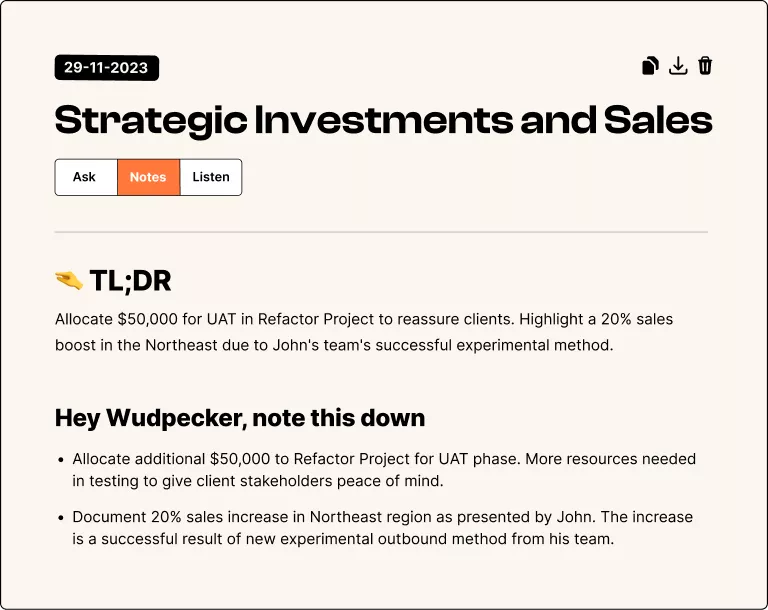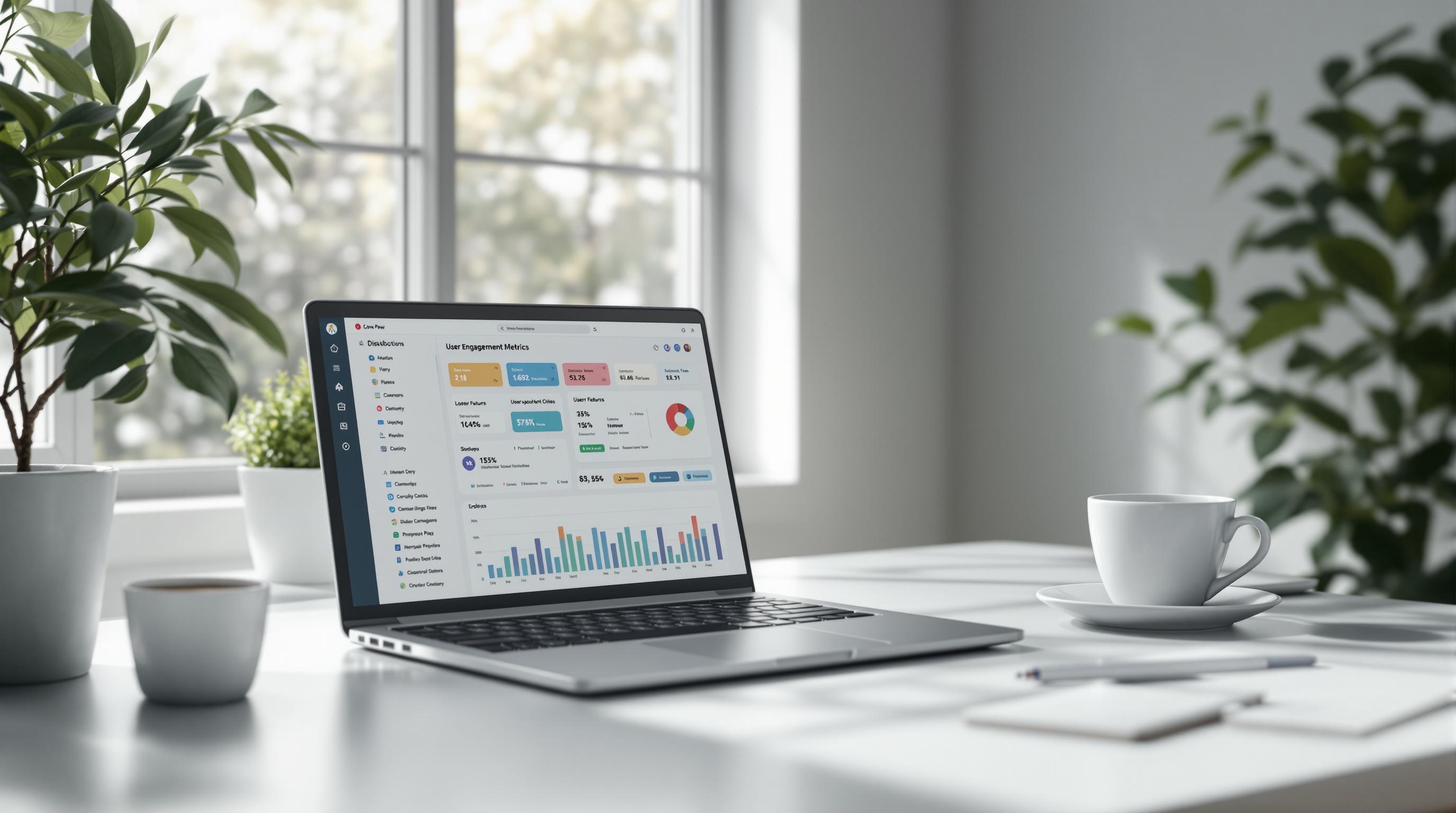Account-level analytics is essential for B2B SaaS companies to get a complete picture of how entire organizations use their product. Unlike user-level analytics, which focuses on individual actions, account-level analytics looks at team and department-wide engagement. This helps you:
- Spot churn risks early: Identify declining usage across departments, not just individuals.
- Find growth opportunities: Pinpoint underutilized features or teams ready for expansion.
- Improve product decisions: Understand how organizations adopt features and prioritize development accordingly.
- Measure account health: Analyze overall adoption and satisfaction at the company level.
Switching to account-level analytics gives you the insights needed to drive growth, reduce churn, and better serve your enterprise customers.
Amplitude Accounts: Track B2B Account Level Insights

Account-Level Analytics Basics
Account-level analytics focuses on three main components to deliver insights that help businesses understand their performance. These elements create a framework for comparing organization-wide metrics with traditional, user-specific data.
Main Components of Account Analytics
Aggregated Usage Metrics
This combines individual user activities into organization-wide data points. Examples include tracking the total number of monthly active users per account, average session durations, and overall feature adoption rates.
Account Health Indicators
These metrics evaluate the overall performance and satisfaction of an account, such as:
- Engagement levels across the team
- Product adoption across departments
- Overall feature usage rates
- Time spent collectively using key features
Multi-User Interaction Patterns
This tracks how users collaborate, how departments use features, workflow trends, and progress in onboarding.
Account vs. User Analytics
The primary difference between account and user analytics lies in the scope of their focus and the type of insights they provide:
| Aspect | Account Analytics | User Analytics |
|---|---|---|
| Primary Focus | Organization-wide behavior | Individual user actions |
| Data Scope | Aggregated team metrics | Personal usage statistics |
| Value Assessment | Overall business impact | Individual productivity |
| Growth Signals | Department-level expansion | Engagement of a single user |
| Risk Detection | Adoption issues across the account | Drops in individual usage |
For example, while user analytics might show that five users are highly active, account-level data could reveal that all five belong to the same department. This could point to limited adoption across other teams.
When examining feature adoption, account analytics offers a broader perspective. Instead of seeing that 80% of users accessed a feature once, you might uncover that only 30% of departments use it consistently. This information is critical for product development and customer success teams aiming to improve adoption and engagement.
sbb-itb-6285ddb
How Account Analytics Helps B2B SaaS
Account analytics provides B2B SaaS companies with a clear view of customer engagement at the organization level, addressing the limitations of user-level data.
Identifying Top Accounts and Growth Opportunities
With account analytics, you can pinpoint opportunities for growth by analyzing organization-wide engagement metrics. Here are some key indicators to watch:
Department Penetration Rate
- Track which departments are actively using your product.
- Spot departments or teams that haven’t yet adopted your solution.
- Measure how different business units use specific features.
Usage Intensity Metrics
- Observe how often teams collaborate and the volume of data they handle.
- Identify peak usage times across various departments.
High-value accounts often share common traits, such as:
- Multiple departments relying on core features.
- Strong engagement across various user roles.
- Increased use of advanced functionalities.
- Consistent onboarding of new users.
Detecting Churn Early
Account-level analysis offers a better way to spot churn risks by focusing on organization-wide trends instead of individual user behavior. Here’s what to look for:
Early Warning Signs
- A drop in active users across departments.
- Decreased usage of essential features.
- Less collaboration between teams.
- Stagnant user growth within the account.
Usage Pattern Changes
- Shifts in typical workflows.
- Reduced engagement across the organization.
- Fewer departments adopting cross-team features.
Using Account Data for Product Decisions
Insights from account analytics can guide smarter product development by showing how entire organizations interact with your features.
Evaluating Feature Impact
- Identify features that drive adoption across the company.
- Understand which tools are most useful for teams of varying sizes.
- Uncover common workflows across departments.
- Highlight features that promote collaboration between teams.
Prioritizing Development
- Focus on features that boost engagement across the account.
- Build tools that solve problems for the entire organization.
- Improve features that encourage multi-team usage.
- Develop solutions that enhance cross-department collaboration.
These insights lay the foundation for a successful account analytics strategy.
Setting Up Account Analytics
When it comes to analyzing account-level data, keeping an eye on the right metrics is essential for understanding engagement and driving growth.
Key Metrics to Monitor
Focus on metrics that reveal how accounts are interacting with your product:
- Overall engagement: How often and how deeply accounts interact with your platform.
- Feature usage: Which key features are being used and by which teams.
- Activity heatmaps: Visual tools to identify usage patterns and any potential issues.
These metrics give a clear picture of account activity, helping you manage growth opportunities and address risks early.
Steps to Set Up Account Analytics
To turn raw data into actionable insights, you need a clear and organized setup.
Data Structure Essentials:
- Link users to their respective accounts.
- Establish department and team hierarchies.
- Define key account-level events to track.
- Set up account-specific properties for segmentation.
Implementation Process:
1. Data Collection
- Add tracking code to all relevant user touchpoints.
- Use unique identifiers for each account.
- Track interactions at the team and department levels.
2. Event Tracking
- Identify critical events that reflect account engagement.
- Set up properties for segmenting accounts.
- Enable tracking based on user roles.
3. Dashboard Setup
- Build dashboards that highlight account health and cross-team activity.
- Configure alerts and reports to stay updated on key trends.
Automating these steps can save time and ensure consistency. Let’s look at how Userlens simplifies this process.
How Userlens Simplifies Account Analytics

Userlens streamlines account-level tracking and delivers instant insights. It helps tackle common challenges like incomplete data and missed churn signals by offering:
- Pre-built dashboards for a quick overview of account performance.
- Heatmaps to visualize team activity and feature adoption.
- Automated user-to-account mapping for better decision-making.
With these tools, Userlens makes it easier to track, understand, and act on account-level data effectively.
Conclusion: Why Switch to Account Analytics
Key Takeaways
Shifting to account-level analytics helps B2B SaaS companies grow and minimize churn. Unlike user-level analysis, this approach offers deeper insights into how entire organizations engage with your product.
Here are the main advantages:
- Complete Account Insights: Understand how all users within an organization interact with your product.
- Early Risk Detection: Spot warning signs of churn before it happens.
- Growth Opportunities: Pinpoint the best times to upsell or expand within accounts.
Today, over 20,000 professionals use account-level analytics tools to make smarter decisions in the B2B SaaS space.
How to Get Started
Making the switch to account analytics is simpler than you might think. Here's how to begin:
- Review Your Current Setup: Look for gaps in your existing analytics, especially where account-level insights are missing.
- Set Key Metrics: Identify the metrics that align with your company’s goals.
- Select the Right Tools: Focus on tools that offer:
- Dashboards tailored for B2B
- Tracking for feature usage
- Visualizations like activity heatmaps
Tools like Userlens make this process easier by offering pre-built B2B metrics and instant visibility into account-wide trends. Connect your product analytics today to uncover organization-wide patterns and make smarter, data-driven decisions.
Related posts



.svg)



















.svg)
